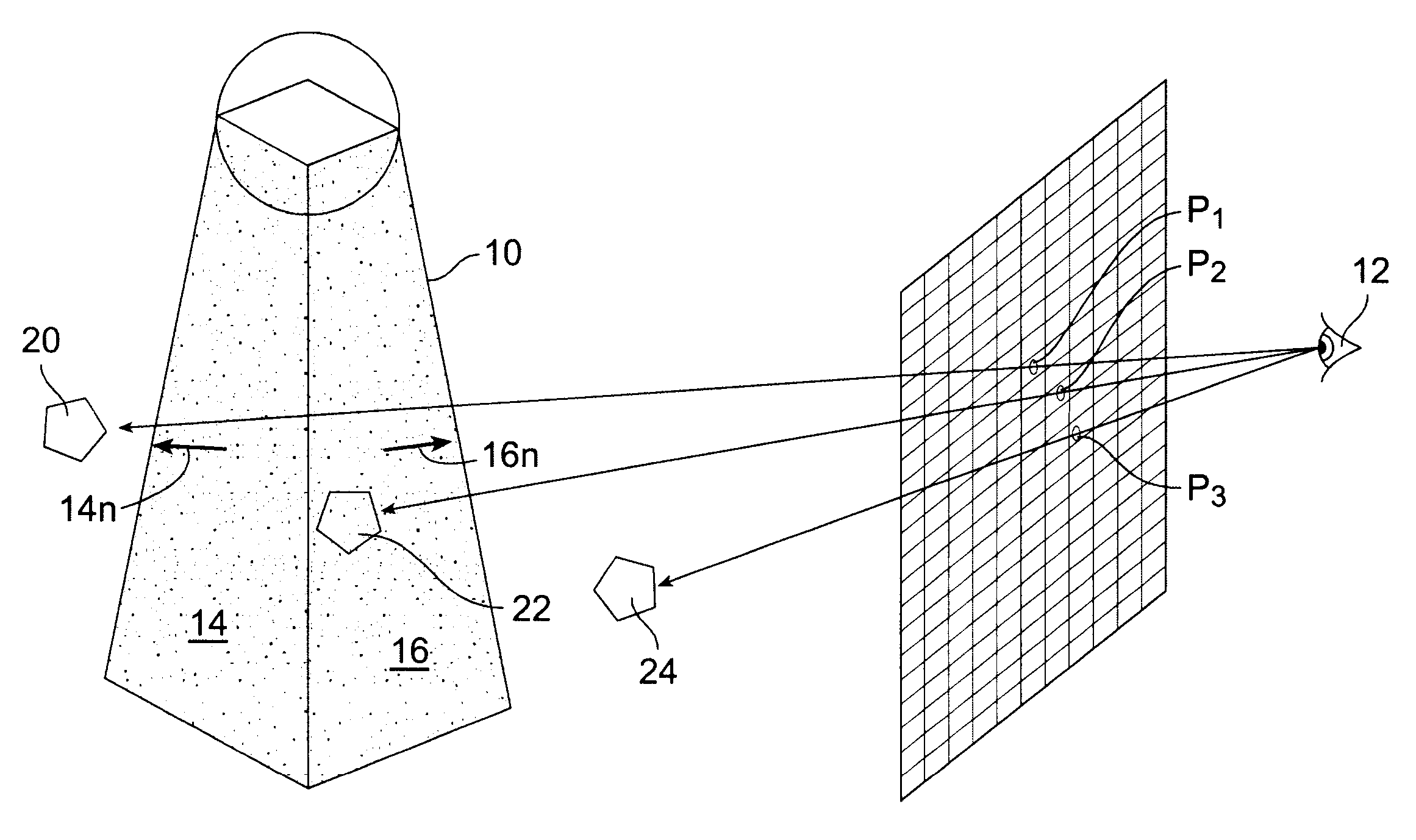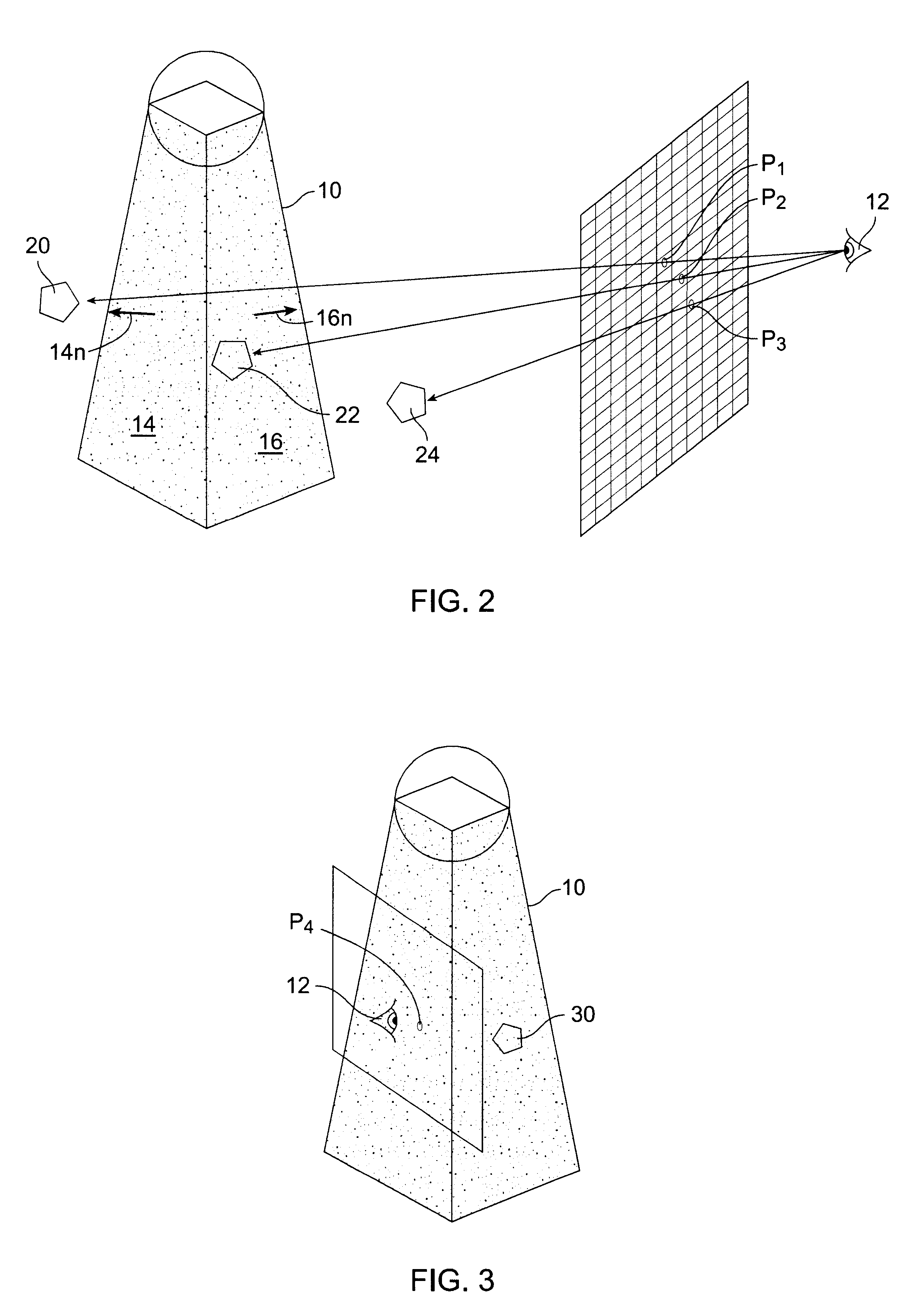Method for rendering shadows using a shadow volume and a stencil buffer
- Summary
- Abstract
- Description
- Claims
- Application Information
AI Technical Summary
Problems solved by technology
Method used
Image
Examples
Embodiment Construction
A preferred embodiment of the present shadow rendering process will be described with reference to the following pseudo-code and FIG. 2.
A key step in the present process is the definition of the newZTest (X, P) function which inverts the z-test comparison used in the prior art. In the usual test, pixels having depth (z) values less than the depth (z) values stored in the z-buffer pass the z-test. In newZTest( ), pixels having depth (z) values greater than the corresponding depth (z) value stored z-buffer values pass the new z-test.
Steps A and B are similar to the prior art, the polygons in the scene are drawn and z-buffer values for the scene are stored. newztest( ) is enabled and z-write is disabled.
In step C, the all bits in the stencil buffer are reset to initialize the buffer. As will be apparent below, there is no need to set the stencil bits in the case where the viewpoint is within the shadow volume.
In step D, the back-facing shadow volume polygons are drawn. This reverses th...
PUM
 Login to View More
Login to View More Abstract
Description
Claims
Application Information
 Login to View More
Login to View More - R&D
- Intellectual Property
- Life Sciences
- Materials
- Tech Scout
- Unparalleled Data Quality
- Higher Quality Content
- 60% Fewer Hallucinations
Browse by: Latest US Patents, China's latest patents, Technical Efficacy Thesaurus, Application Domain, Technology Topic, Popular Technical Reports.
© 2025 PatSnap. All rights reserved.Legal|Privacy policy|Modern Slavery Act Transparency Statement|Sitemap|About US| Contact US: help@patsnap.com



